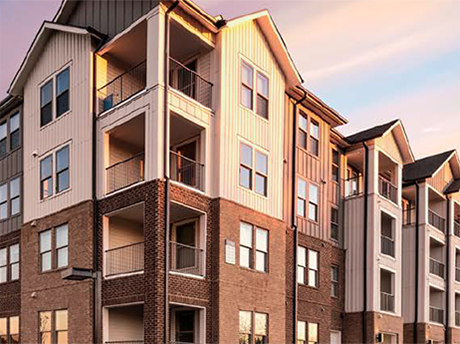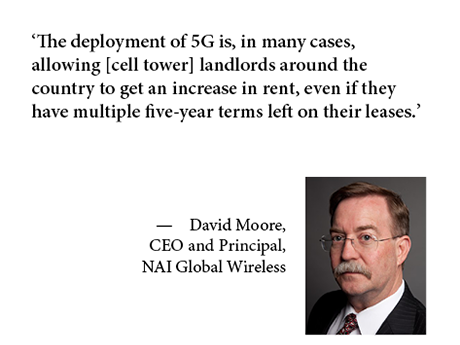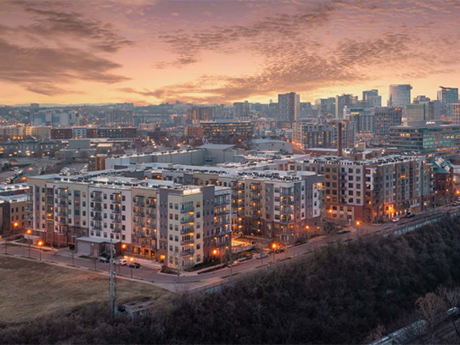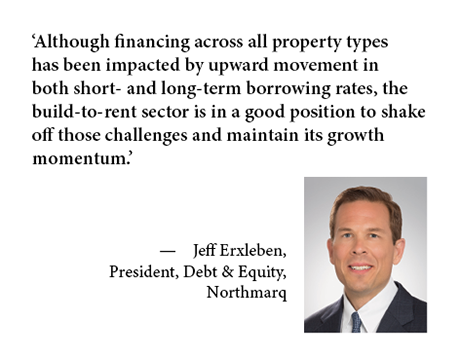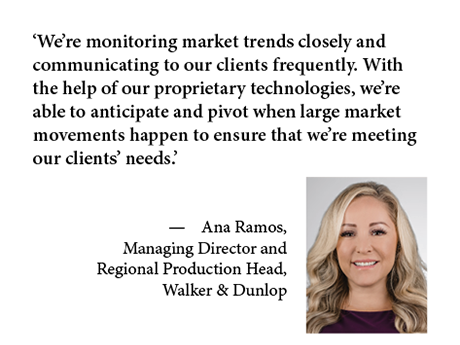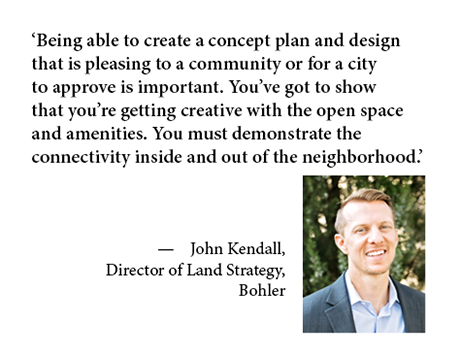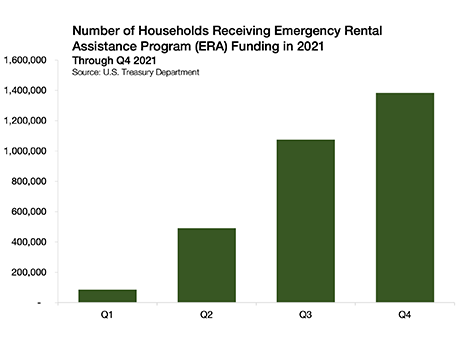Last year, a city known more for music than multifamily development led the nation in new construction growth rates, with luxury high rises popping up from downtown to the Gulch to along the Cumberland River. Nashville, attracting an abundance of debt and equity funding from sources old and new, is now considered an institutional-grade market. The driving force behind this growth: technology. Today, singers, songwriters and studio artists share the city with a growing number of software developers, systems architects and startup founders — and all of these innovators need a place to live, work, shop and play. Nashville’s tech evolution started from a solid foundation in healthcare, automotive and education, including HCA Healthcare and its associated startups, spinoffs and subsidiaries and an automotive hub that includes North American headquarters for Nissan and Korean tire manufacturer Hankook, as well as EV and battery cell manufacturing plants for GM. Twenty nine institutions of higher education, including Vanderbilt University, further helped develop a strong pipeline of tech talent. This ecosystem and a business-friendly climate have attracted some of the nation’s top tech employers: Amazon, who chose the metropolitan area for its much-coveted Center of Excellence; Oracle, relocating from Austin; and Capgemini, whose …
Content Partner
What should potential landlords know about leasing space for cell towers or renegotiating their legacy leases? “Landlords need to understand what economic opportunity they have available to them,” says David Moore, CEO and principal at NAI Global Wireless. Involving cell tower lease consultants, especially for existing leases, and considering cell site buyouts are two powerful tools available to cell site landlords today. For decades, Moore explains, property owners have been willing to sign less-than-ideal agreements with carriers and tower companies. Over the years, landlords, thinking that just because these cell tower sites are small and out of the way or because they did not want to turn down “free money,” were willing to sign disadvantageous lease agreements. Landlords often do not understand the impact of signing a lease agreement with a potential term of 30 years (made up of five-year terms), especially when tenants might use leases to constrain certain real estate negotiations (including rights like tenant approval for buyers, rights of first refusal and noncompetition clauses). In many cases, tenants have the unilateral right to terminate their lease without notice, a right about which landlords frequently aren’t aware. Rent escalations, terms and conditions, inflation and more need to be …
Content PartnerFeaturesLeasing ActivityMidwestMultifamilyNortheastSoutheastTexasWalker & DunlopWestern
Walker & Dunlop: Spring Multifamily Market Contends with Inflation, Housing Bubble Fears
By Walker & Dunlop’s Research Department Inflation and a New Era of Monetary Tightening Amid 40-year high inflation rates, home prices that have surged by over 40 percent in the past three years and double-digit price increases in basic necessities such as food, gas and electricity, the United States seems to be beset on all sides. Inflation has become the question of the day with little relief even after monetary tightening began earlier in the year. After a quarter point increase in the Federal Reserve target rate in March, the Fed implemented a whopping 50 basis point increase in the target Federal Funds rate in May after April inflation remained at 8.2 percent, near the March high of 8.6 percent.[1] The central bank’s goal is to reduce inflation to an annual rate of approximately 2 percent. The employment base, the Fed’s other prime objective, seems to remain strong. Unemployment (at 3.6 percent in April) remains low and employment growth of 390,000 in May beat economist expectations. The Fed’s job now is to beat inflation and prevent it from becoming embedded in consumer expectations. Why? Because once inflation becomes embedded in expectations, it changes consumer behavior and becomes somewhat of a …
Build-to-RentContent PartnerFeaturesLeasing ActivityMidwestMultifamilyNortheastNorthmarqSingle-Family RentalSoutheastTexasWestern
Build-to-Rent (BTR) Property Type Offers Positive Demand Outlook
By Jeff Erxleben, president, debt & equity at Northmarq Liquidity and an incredibly positive outlook for single-family build-to-rent (BTR) properties is helping to offset some of the turbulence developers are experiencing from rising interest rates. Developers have been ramping up the pace of single-family BTR construction over the past five years with forecasts that call for a record high 60,000 new units to be completed in 2022. That volume shows a steady increase over the 53,000 units completed in 2021 and 49,000 in 2020, according to Northmarq’s recently released Single-Family Build-to-Rent Properties Special Report. Although financing across all property types has been impacted by upward movement in both short- and long-term borrowing rates, the BTR sector is in a good position to shake off those challenges and maintain its growth momentum. Higher construction and financing costs are being offset by rising rents with year-over-year rent increases, that in many areas of the country, are quite substantial. Developers also are finding good access to both debt and equity. The number of lenders that are active in the space is expanding as developers move into new markets and continue to prove out business models and performance with successful lease-up and dispositions. For …
Content PartnerFeaturesLeasing ActivityMidwestMixed-UseNAINortheastRestaurantRetailSoutheastTexasWestern
Which Way is the Retail Pendulum Swinging?
Although the pandemic wreaked havoc on the retail sector in general, the culling of weak concepts has left space for strong retailers to flourish. The retail industry is seeing an explosion in experiential retail, medical/dental space is ubiquitous and non-traditional tenants are jumping at opportunities to secure prime locations. As a result, shopping centers have proven very resilient, says George Macoubray, vice president of retail brokerage with NAI Elliott in Portland, Oregon. “Today’s centers continue to evolve and to address what consumers need in terms of a place for people to congregate and participate in the activities that are important to them.” The entertainment sector was hit hard by the pandemic, he notes. “But now those operators seem to be out looking for locations, and they’re seeing the light at the end of the tunnel. People want to gather. They want to be entertained. They want to go out and do activities. Those kinds of experiences are happening more and more often in shopping centers — and you can’t buy those activities on Amazon.” Exciting new in-person experiences are helping to elevate shopping centers. “There’s an influx of experiential retail. From golf simulator experiences to ping-pong places to axe-throwing activities, …
Capitalizing on a changing marketplace and employing technology to streamline processes are essential strategies in helping small balance clients meet their goals. Ana Ramos, managing director and regional production head at Walker & Dunlop, emphasizes the importance of speed, creativity and using technology to assist in mortgage lending processes. She also emphasizes the centrality of teamwork, company ethos and technology to put a big emphasis on small balance loans. Walker & Dunlop defines “small loan” as up to $15 million for multifamily properties with five or more units. These clients are usually composed of smaller individual investors who need attention and education when it comes to mortgage lending. “It’s really hard for a large producer to think small, but it’s really easy for small producer to think big,” Ramos says. “It’s difficult for producers who are accustomed to institutional lending, with its higher fees and complex vesting structures to consider the credit parameters that are necessary in small balance loans. Small loans is a niche type of mortgage lending, and it only works if you have a company within a company, like Walker & Dunlop with its dedicated small loan team that works together through application, underwriting and closing.” Tech’s …
Content PartnerFeaturesHealthcareIndustrialLoansMidwestMultifamilyNAINortheastOfficeSoutheastTexasWestern
Rising Interest Rates and Inflation to Fuel Change in Property Markets
Beginning in the fourth quarter of 2020, commercial real estate buyers and sellers moved off the sidelines and began fueling an impressive investment sales rebound as many pandemic-related lockdowns and restrictions eased or ended. The rush to purchase hard assets hit its apex a year later when commercial property sales surged to a record $362 billion in the fourth quarter of 2021 alone, according to Real Capital Analytics, a part of MSCI Real Assets that tracks property transactions of $2.5 million or more. The strong market is continuing this year: Deals of $170.8 billion closed in the first quarter, a year-over-year increase of 56 percent, Real Capital reports. Buyers in the first quarter also pushed up prices 17.4 percent over the prior year, according to Real Capital’s Commercial Property Price Indices (CPPI). But given rising interest rates and other recent headwinds, will investors continue to drive robust investment activity and bid up prices? The 10-Year Treasury yield has spiked some 150 basis points to around 3 percent since the beginning of 2022, and fixed 10-year mortgage rates of between 3 percent and 4 percent are up about 100 basis points. For short-term variable loans, the benchmark secured overnight financing rate …
Affordable HousingBohlerBuild-to-RentContent PartnerDevelopmentFeaturesMidwestMultifamilyNortheastSingle-Family RentalSoutheastTexasWestern
Build-to-Rent Planning and Entitlements: How to Avoid Challenges
The build-to-rent (BTR) property type has gained significant traction in the commercial real estate market due to increasing interest from tenants, investors and developers. Developers moving into the BTR market before 2020 originally focused on this sector as an “in between” product for future home buyers who weren’t ready to commit to a single location but wanted additional space and amenities. The pandemic fueled tenants’ desires for more privacy and space without the long-term commitment of homeownership, which ignited growth in the sector. As costs for single-family homes continue to rise, the BTR niche also increasingly attracts would-be homeowners who are priced out of the homebuying market — and the growing demand for BTR properties draws the attention of more and more investors and developers. But not all stakeholders are immediately on board with development of BTR properties. The concept is rather new in some markets and local communities have questions about the zoning and operation of these hybrid communities, which are an intriguing mix of single-family concept and multifamily operations. Developers often need to educate municipalities about the BTR concept — and they need to plan BTR properties that work for the local community. This is where Bohler — a land …
Affordable HousingArbor Realty TrustContent PartnerDevelopmentFeaturesMidwestMultifamilyNortheastSoutheastTexasWestern
As Affordability Crisis Deepens, Policies and Market Shift to Assist the Underserved
By Omar Eltorai, Arbor Realty Trust To understand the affordable housing market in spring 2022, one needs to first assess how this sector weathered the pandemic and then assess the current state of housing affordability across the country. In-depth findings on these trends are included in the Arbor Realty Trust-Chandan Economics Affordable Housing Trends Report, from which this article is excerpted. Weathering the Pandemic When it comes to the pandemic response, federal policymakers proved effective at defusing a large-scale increase in homelessness from financially insecure households. The Center for Disease Control and Prevention’s (CDC) eviction moratorium, while unpopular among industry advocates, prevented an estimated 1.6 million evictions, according to an analysis by Eviction Lab. After the Supreme Court struck down the federal moratorium in August 2021[1], the wave of evictions that many were forecasting did not immediately materialize. Nationally, tracked eviction filings ticked up but remained well below their pre-pandemic averages, according to Eviction Lab. A key reason why many at-risk renters have remained in their homes is the deployment of funds allocated in the Emergency Rental Assistance Program (ERA) — a funding pool designed to assist households that are unable to pay rent or utilities. The ERA Program was …
Content PartnerFeaturesIndustrialLeasing ActivityLee & AssociatesMarket ReportsMidwestMultifamilyNortheastOfficeRetailSoutheastTexasWestern
Lee & Associates’ First-Quarter 2022 Economic Rundown by Sector
Lee & Associates’ newly released Q1 2022 North America Market Report scrutinizes first-quarter 2022 industrial, office, retail and multifamily outlooks throughout the United States. This class-by-class review of commercial real estate trends for the first quarter of the year focuses on how real estate is adjusting to long-term post-COVID attitudes. Lee & Associates has made the full market report available here (with further breakdowns of factors like vacancy rates, market rents, inventory square footage and cap rates by city), but the overviews offered below provide sweeping looks at the overall health and obstacles for four major commercial real estate sectors. Industrial: Rents Pushed on Strong Demand Strong demand for industrial space throughout North America continued in the first quarter as vacancies fell to record lows and rent growth hit double digits. First quarter net absorption in the United States totaled 92.8 million square feet, which was up 25 percent year over year but down 35 percent from the 143-million-square feet average of the last three quarters of 2021. Annualized rents rose 10.1 percent in the U.S. and the average vacancy rate fell to 4.1 percent. Part of this trend was due to a pause in new construction starts early in the pandemic. However, …


